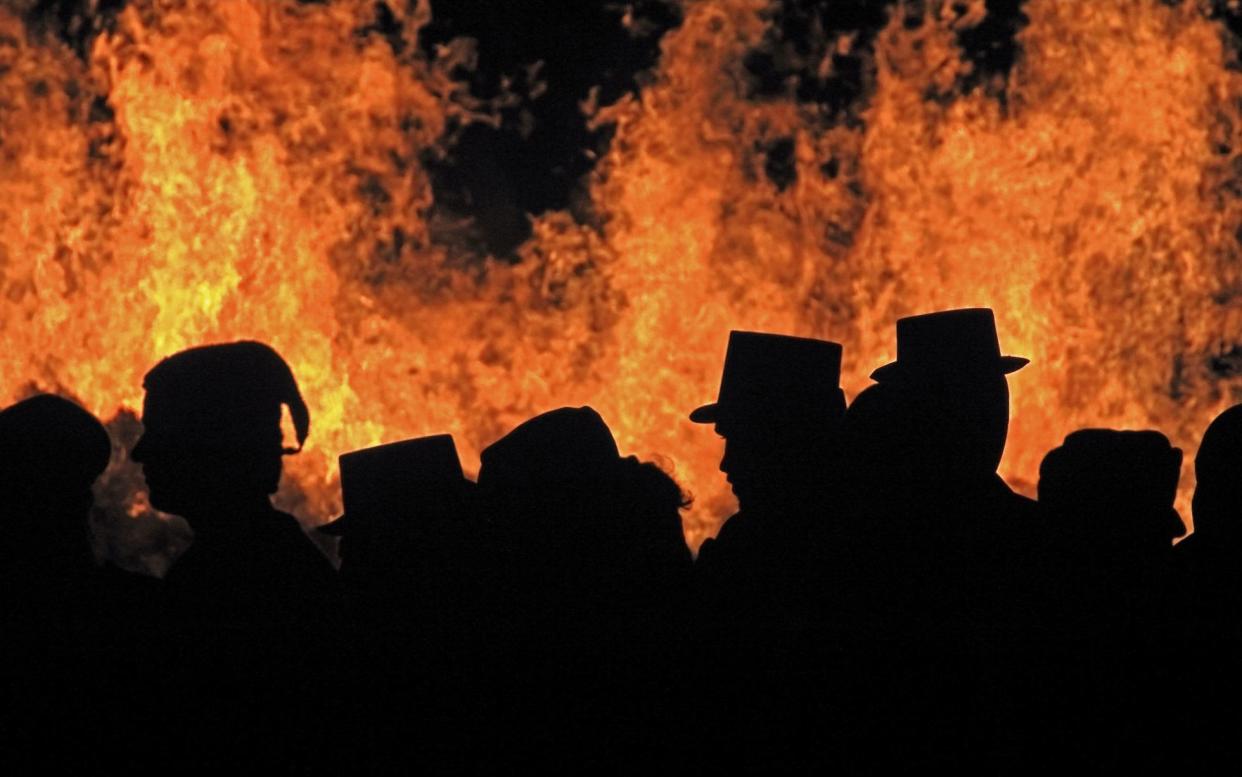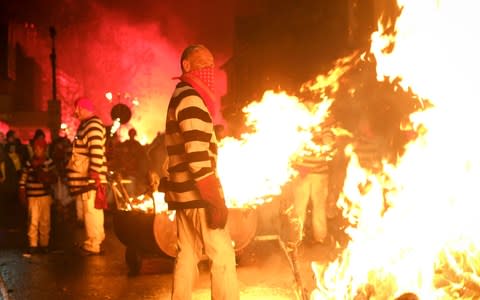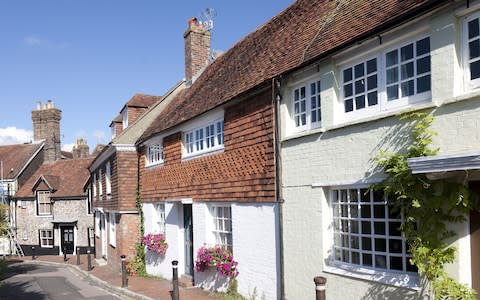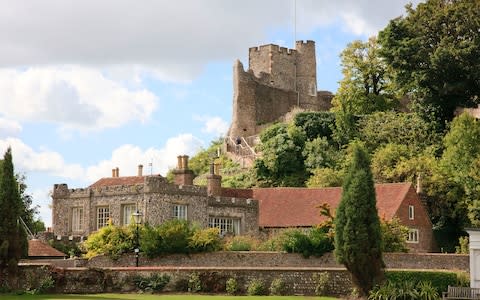Fire and fury in a toytown England that time forgot

To take a trip to Lewes is to fall down the rabbit hole into a toytown England that time forgot. But don’t be fooled by the beguiling junk shops, the burgeoning independent coffee scene, the well-heeled inhabitants and the peaceful priory ruins.
Historically a rebellious town, Lewes still likes to think of itself as rather feisty. To give you some context: the Battle of Lewes in 1264 went down in history as England’s first fight for democracy, leaving King Henry III cowering and defeated in the town’s priory.
In the 18th century, the most revolutionary resident of all, Thomas Paine, could reliably be located expounding his politics at the White Hart. You can also raise a glass to him at the equally charming Rights Of Man ale house (Lewes is not short of pubs), and visit his former abode, which is now home to the Sussex Archaeological Society.
Spare us the history lesson, you cry – but bear with me. Legend has it that there’s something in the East Sussex water. After all, the radicals are still here. And once a year, they come out to play. Not for nothing is Lewes dubbed the bonfire capital of the world. The day after tomorrow, on Nov 5, anarchy will descend as a gloriously rowdy procession (torches in hand, in varying degrees of fancy dress – of varying degrees of contentiousness) marches through the closed roads, and seven “Bonfire Societies” host monumental pyres at different sites.
As well as Guy Fawkes, Pope Paul V is among the numerous larger-than-life effigies traditionally burnt (avenging the martyrdoms of the 17 Protestants burnt at the stake in Lewes between 1555 and 1557 under Queen Mary I). Other giant mannequins last year included a tubby Kim Jong-un sharing a pram with Donald Trump, a mankini-sporting Vladimir Putin and Theresa May as a Bond girl.

The cast for 2018 is yet to be revealed. It’s tempting to bet on Harvey Weinstein, although he did feature at Edenbridge Bonfire Night in Kent last year. Be sure to gather around the bonfire closest to the drinking hole you hope to end up in, and to carefully plot your transport to and from the festivities in advance.
The event is a feat of planning and undoubtably brings the community together, but according to one Lewes newcomer, it can be dangerous to affiliate yourself with one of the cultish Bonfire Societies too soon. These are tribal cliques, and it could come back to bite you. I also learn that the night before, the 4th, is the locals’ night, known as “Badge Night” – and that it can be even more raucous then the main event (so don’t expect a quiet one if you’re staying in town the night before. Speaking of which, Pelham House Hotel is delightful).
Bonfire Night aside, eccentricity and artsiness are celebrated in Lewes year-round – a precedent set by Virginia Woolf, who owned the town’s former windmill, The Round House, as well as a retreat at Monk’s House in nearby Rodmell. The literary society her husband, Leonard, founded here still operates today. Music-wise, of course, the town is a stone’s throw from Glyndebourne and its operatic celebrations, as well as home to the Love Supreme Jazz Festival, Lewes Live and Rocket FM, its beloved radio station.
Cinephiles are also catered to by Depot, a three-screen independent cinema, arts venue and restaurant which opened last year on the site of a former brewery, right next to the railway station.
Like Totnes, it has its own currency (you can spend the Lewes Pound at the Lewes Food Market every Friday). And every Sunday morning, at 9am, the townsfolk take to the “twittens” (that’s Sussex for “alleyway”) for their weekly Twitten Run – should they not be indisposed after a beer-soaked round of the traditional local pub game of “dwyle flunking” at The Lewes Arms, which also hosts the World Pea Throwing Championship.

William Morris described the place rather sweetly as “a box of toys under a great amphitheatre of chalk hills”, and happily, this image still rings true.
Six good reasons to visit Lewes
The brewery
The 19th-century Harvey’s Brewery is affectionately known as “The Cathedral of Lewes”, and is a popular site of pilgrimage for beer enthusiasts. Try Sussex Best and Bonfire Boy, a suitably smoky amber ale with a bitter, burnt aftertaste.
The bookshop
The Fifteenth Century Bookshop is a low-beamed, higgledy-piggledy specialist in rare and collectable illustrated children’s books.
The house and garden
Make sure to meander around the gardens and admire the autumn leaves at Southover Grange (Anne of Cleves House is also worth a gander – it was part of her divorce settlement, although she never visited).

The flea market
Bargains abound at the famous Lewes Flea Market, a treasure trove of a space that has lived previous lives as a non-conformist chapel and a skirt factory. Now you can while away the hours shopping for antique furniture, silverware, vintage clothes and more.
The castle
Lewes Castle is a gated Norman castle on a mound, complete with a museum and a barbican. It was built by William de Warenne, 1st Earl of Surrey, when he and his wife Gundred were awarded the land by William the Conqueror.
The café
The Backyard Café is nestled in The Needlemakers, a boutique shopping and craft centre in an old candle factory. It’s a cool, cosy space for breakfast (huevos rancheros), coffee (locally roasted) and cake (gluten-free carrot).

